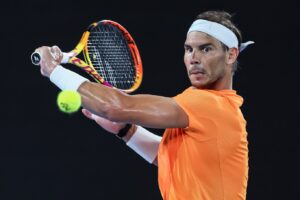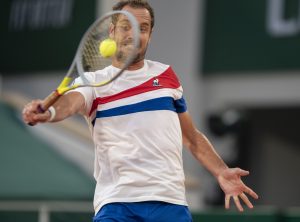Daniil Medvedev has had a stunning last 10 months. From winning just five matches across ten events last spring and summer, he now finds himself ranked within the world’s top 15, having won three titles since August, after what has been a meteoric rise for the young Russian. But whilst the future looks bright for the 23-year-old, there are still several concerning flaws which plague the Russian’s game.
Perhaps the most obvious issue is his fitness. When one thinks of Rafael Nadal, Novak Djokovic and Andy Murray at 23, the image that comes to mind is of a machine, that could run for days and grind opponents into the dust. It’s hard to say the same of any of the rising crop of Next Gen stars, however. Indeed, none seem to come close to replicating the astonishing fitness levels achieved by players in previous generations. But Medvedev not only finds himself struggling in longer matches. More concerning for the Russian is his inability to deliver a good performance after a marathon match.
Earlier this year, for example, in the Brisbane final against Japan’s Kei Nishikori, the match looked to be in the balance heading into the decider. Medvedev was surely feeling confident, however, after beating Nishikori to lift the Japan Open title the previous October. But Nishikori, hardly known for his powers of endurance, wore him down with ease. Medvedev collapsed physically, winning just 33% of points behind his serve, with Nishikori cruising to the set and, with it, the title. The serve faltered, the groundstrokes broke down and mentally he checked out, not a good sign.
Just two weeks later, he pushed eventual champion and world # 1 Djokovic hard in the fourth round at the Australian Open. At one set all, Medvedev had three break points to take a 3-1 lead in the third. Whilst it potentially looked like a huge upset was on the cards, Medvedev would go onto win just three of the next 14 games. His movement declined rapidly and the Serbian began to find it easy to move him around the court and extract errors.
Even though he did get his revenge against Djokovic in Monte-Carlo, marking his first win over a reigning world #1, once again his fitness let him down in the next round. Many had expected him to breeze past Dusan Lajovic into his first Masters final, he didn’t. After racing out to a 5-1 lead in the first set, he appeared to hit a wall, and won just one more game in the match as he fell to a 5-7 1-6 defeat. It felt like a huge opportunity to claim a Masters title missed, as Medvedev proved unable to sustain the excellent play that had taken him to back-to-back battling wins over top ten players as his body broke down.
Which leads onto the simple reason his fitness is lacking, which is his style of play. Whilst the four-time ATP champion has an unorthodox game, especially on his forehand and serve, there are bigger problems beneath the surface. When you look at all the successful players over the last fifteen years who have effectively kept the ball in play and let opponents beat themselves, almost every single one has been a great mover and defender. Just look at Nadal and Djokovic, or even David Ferrer and Lleyton Hewitt just to name a few. The issue is Medvedev isn’t like any of these names and he never will be.
At 6’6” the fact he has adopted such a defensive style is surprising, although there is no arguing with the results it has produced. But moving a such a lanky frame around over the course of a long match is surely significantly more taxing that for smaller, more naturally athletic players such as Nadal. Thus whilst he has worked hard to improve his fitness over the past twelve months, with impressive results, it may never be enough to prevent him from picking up the sort of niggling injuries that derailed his challenge in Monte Carlo.
Which is why, in order to maximise his undeniable potential, the Russian may need to revamp his style. Right now he’s already a very good player, but continuing to play such defensive tennis seems unlikely to yield the same benefits as a more aggressive approach. Because frankly as long as he keeps playing like this, others will do it better, just because they have the bodies and strokes to make it work. If Medvedev wants to take matters into his own hands and use his height, build and power to his advantage he needs to step in and be the aggressor. That doesn’t mean he needs to be as aggressive as compatriot Karen Khachanov and constantly try to hit through opponents.
But he does need to find a better balance between aggressive tennis and grinding from the baseline so he’s the one dictating play, rather than allowing himself to be worn down by better movers. As long as the Russian can keep ahead in rallies, his movement will become less exposed, rallies will become shorter, and overall he’ll be more effective in threatening those at the very top of the game.
Main photo:
Embed from Getty Images






